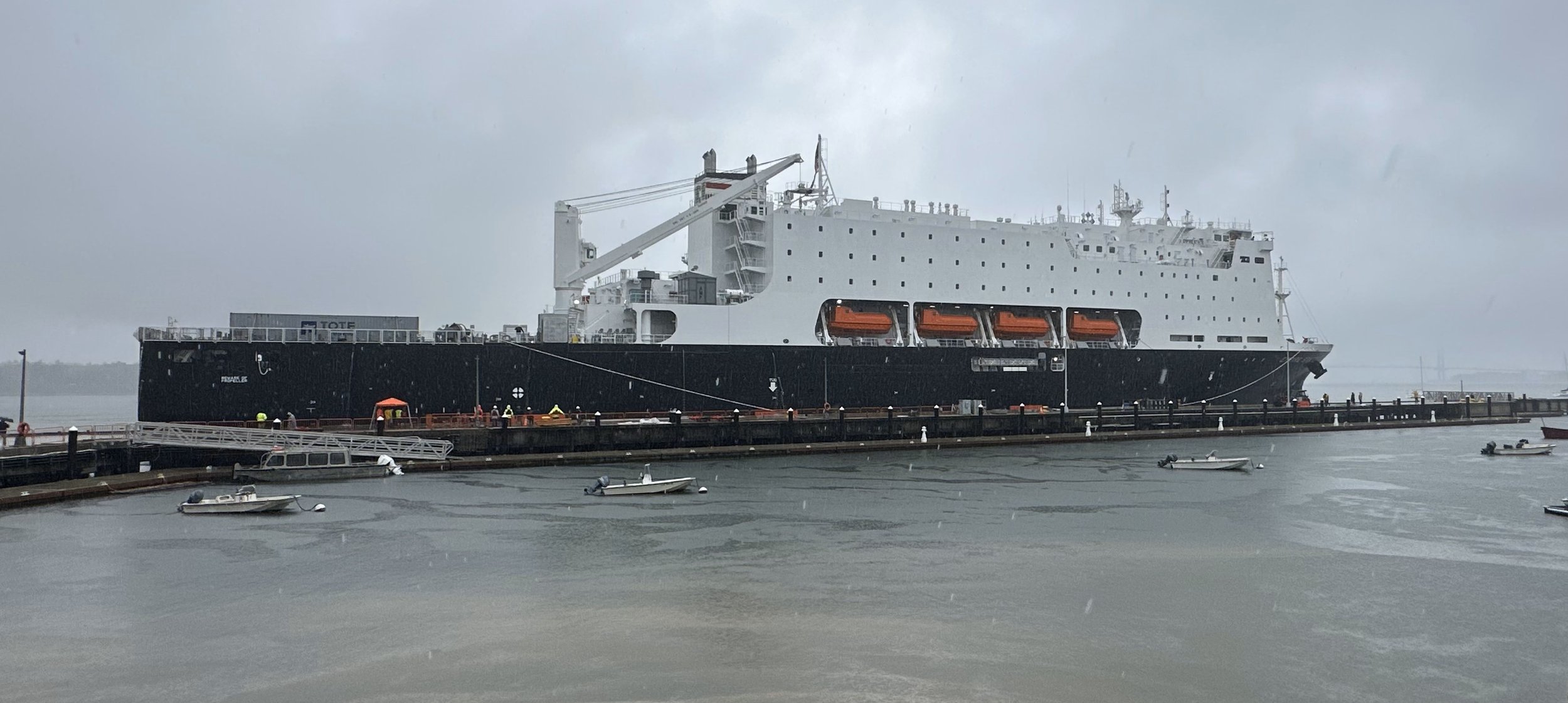Photo shows EMPIRE STATE, the first NSMV, at arrival at SUNY Maritime on Monday, September 18, its permanent home.
HEC won a contract from MARAD to develop a concept design for a new training ship (NSMV) for the five State Maritime Academies (SMA) that would also function as a humanitarian assistance and disaster relief (HA/DR) vessel for the US government: National Security Multi-purpose Vessel (NSMV). HEC has been involved in developing the new training ship since the project’s origins in 2015.
HEC is proud to have played an integral role in designing “Empire State VII, the first in a series of NSMVs – the purpose-built, state-of-the-art training ship for the state maritime academies” from the ground up, turning the dream of a new training ship for educating the US mariners of the future into a reality. We wish many years of success to the ships and the mariners they train.
EMPIRE STATE PROJECT HISTORY:
EMPIRE STATE at its home pier
HEC visited three of the SMA’s with existing training ships to learn about how a training ship was used, what were desirable features, and what was undesirable. Added to the training ship requirements was the need to support HA/DR missions. Based on these visits, a list of requirements was developed, and HEC prepared a concept design that met all the essential requirements.
HEC also developed concept designs for conversions using existing vessels. However, the cost savings compared to a new vessel were insignificant, so MARAD opted to proceed with the new build option.
HEC then developed a full set of Guidance Drawings and Specifications for the design. The Guidance design was close to a fully developed Contract Design covering ship structure, full ship FEA, arrangements, machinery sizing, piping diagrams, electrical load analysis, one-line diagram, high voltage switchgear specifications, and intact and damage stability.
In 2019, Philly Shipyard was contracted to build initially two NSMVs with options for three more. Over time, funding was made available to build the entire fleet of five vessels. During the detailed design by Philly Shipyard and its design agents and the construction of the EMPIRE STATE and its sisterships, HEC has provided technical support to MARAD, including reviewing all the drawings and preparing some of the required operating documents like the Cargo Securing Manual, and made periodic visits to the shipyard to provide construction oversight.
Mar. Admin Phillips Signing over the EMPIRE STATE to Adm Alfultis, Pres. SUNY Maritime
Inside the US' New National Security Multi-Mission Vessels - Dec. 2020
Past Articles
April 18, 2022 - MARINE LINK ARTICLE ON NSMV: PHILLY SHIPYARD NETS $300M ORDER FOR FIFTH NATIONAL SECURITY MULTI-MISSION VESSEL
This marks the fifth and final NSMV in the training ship series. The modern vessel will replace the aging training vessel at California State University Maritime Academy in Vallejo, California, along with serving as an educational and training platform, the NSMV will also be available to uniquely support federal government efforts in response to national and international disasters such as hurricanes and earthquakes. You can read the Marine Link 4/18/22 article here >
Construction of the new vessel (NSMV 5) is expected to start in 2023. The contractual delivery date for NSMV 5 is set in 2026. In 2015 a concept-level design was prepared by Herbert Engineering Corp. (HEC), with the Phase 3 design completed in early 2017.
Domestic Maritime Training: In Extremis: 2018 article here >
NSMV Video Visualisation: November 14, 2017 >
Designing the New National Security Multi-Mission Vessel: 2017 article >
NSMV CONCEPT DESIGN PRESENTED TO MARAD : September 25, 2015 >




